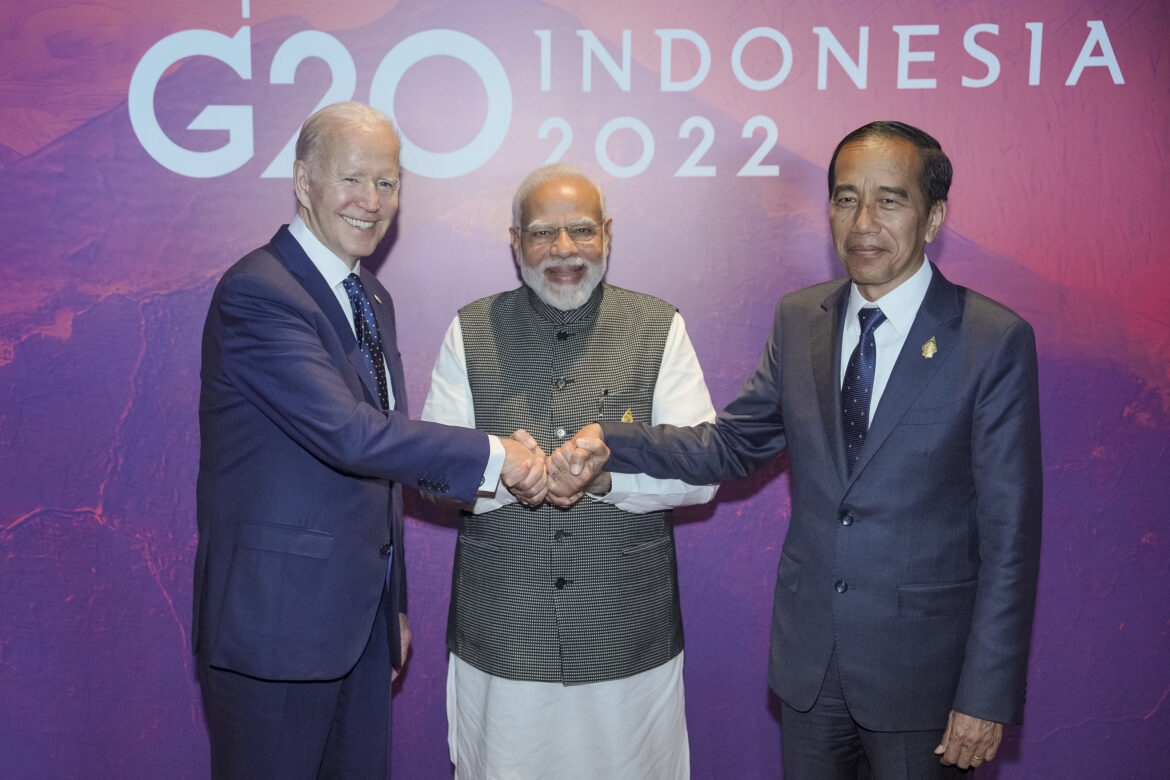The future of the non-aligned movement in geopolitics has been made unclear by recent shifts. Non-alignment has long been a convenient solution for states whose ideological leanings do not clearly correspond to those of hegemonic powers. The movement is composed of states originating mostly from the global south, collectively pursuing policies of sustainability, pacifism, and states’ rights to self-determination. Post-colonial states have a particularly strong claim to non-alignment; ties with western states and former colonizers can be economically beneficial but risk reproducing the same relationships of exploitation. Non-aligned states represent by far the largest bloc in the United Nations, meaning despite many of their states having little economic sway, they hold immense authority. The movement is frequently at odds with liberal economic institutions that claim their policies of sustainability to be wasteful and inefficient, and its diversity and size have made it a target for power blocs looking to expand their influence. With Russia’s invasion of Ukraine being on the grounds of its pursuit of NATO membership, brings calls for condemnation that complicate the neutrality of non-aligned states.
India is a particularly significant example of a successfully non-aligned state, having helped found the movement in 1955. Though appealing intermittently to geopolitical powers, India has avoided long-term commitments to states outside the movement for much of its history. Having ample precedent for aversion to both cold war blocs, forging a culturally grounded third way in partnership with other similarly minded states was an effective means of breaking dependence on Britain without giving ground on regional conflicts. This set of preferences has largely persisted, though it has become considerably more nuanced with the growth and diversification of India’s economy and the reorganization of geopolitical power following the cold war. More recently, India’s government proclaimed non-alignment as an antiquated position, with their current stance better defined as ‘multi-alignment.’ Multi-alignment, developed during Prime Minister Modi’s decade in power, seeks to forge closer alliances on a more pragmatic basis which in turn mediates pressures to join larger geopolitical blocs.
It is India’s belief that they are capable of a unique and independent pattern of development, with some scholars even pointing to the emergence of a tripolar world in which India plays a more active role in mediating global conflict. However, like non-alignment, multi-alignment is a stance which breeds geopolitical contradictions as forging close connections with competing states risks producing widespread tension, rather than peace. Avoiding long-term associations with global powers leads to a patchwork of allegiances and stances that non-aligned governments often struggle to keep coherent. Though India claims to avoid contests of hegemony, it is still beholden to regional power dynamics which have historically brought it into conflict with China. India is unique among China’s neighbors, in that it has a strong economy and a formidable military, which, combined with historical border disputes, has produced a tendency towards conflict rather than the homogenization of interests. Though India is of comparable size to China, this is a double-edged sword; the stakes of disputes become considerably higher, and in recognizing their own power, neither party is eager to back down.
The viability of non-alignment has been tested like never before by the War in Ukraine, as the stakes have made neutrality a liability. Ukraine was invaded in large part due to its pursuit of NATO membership, which would expand western power into Russia’s sphere of influence. Despite stepping up almost immediately to provide humanitarian support to Ukraine, India has refused international pressures to join the unprecedentedly universal condemnation of Russia’s actions. Multi-alignment seeks to balance close allegiances with all powers at once and to condemn one is to side implicitly with another. India has continued to import Russian oil and fertilizer, throughout the war, pointing to the stabilization of food markets as a transcendent priority during the recent G20 Summit in Bali. Western powers have been less than thrilled about this stance, but such is the nature of non-alignment.
Though internationally controversial, this approach and a continued relationship with Moscow gives India a unique license to broker peace. The same complicated network of allegiances and agreements that routinely provokes the vitriol of powerful states, also absolves India of conflicts of interest as it makes no long-term commitments to other states. During the war, India’s economy has surpassed the United Kingdom to become the fifth largest in the world, meaning their considerable import market gives them leverage to bring opposing parties to the negotiating table.
The persistence of non-alignment speaks to the strong ideological commitment of member states. Though the movement has lost some of its strength over time and its victories are often discreet, it may yet have a significant role to play in bringing peace.
Edited by Emma Benoudiz

